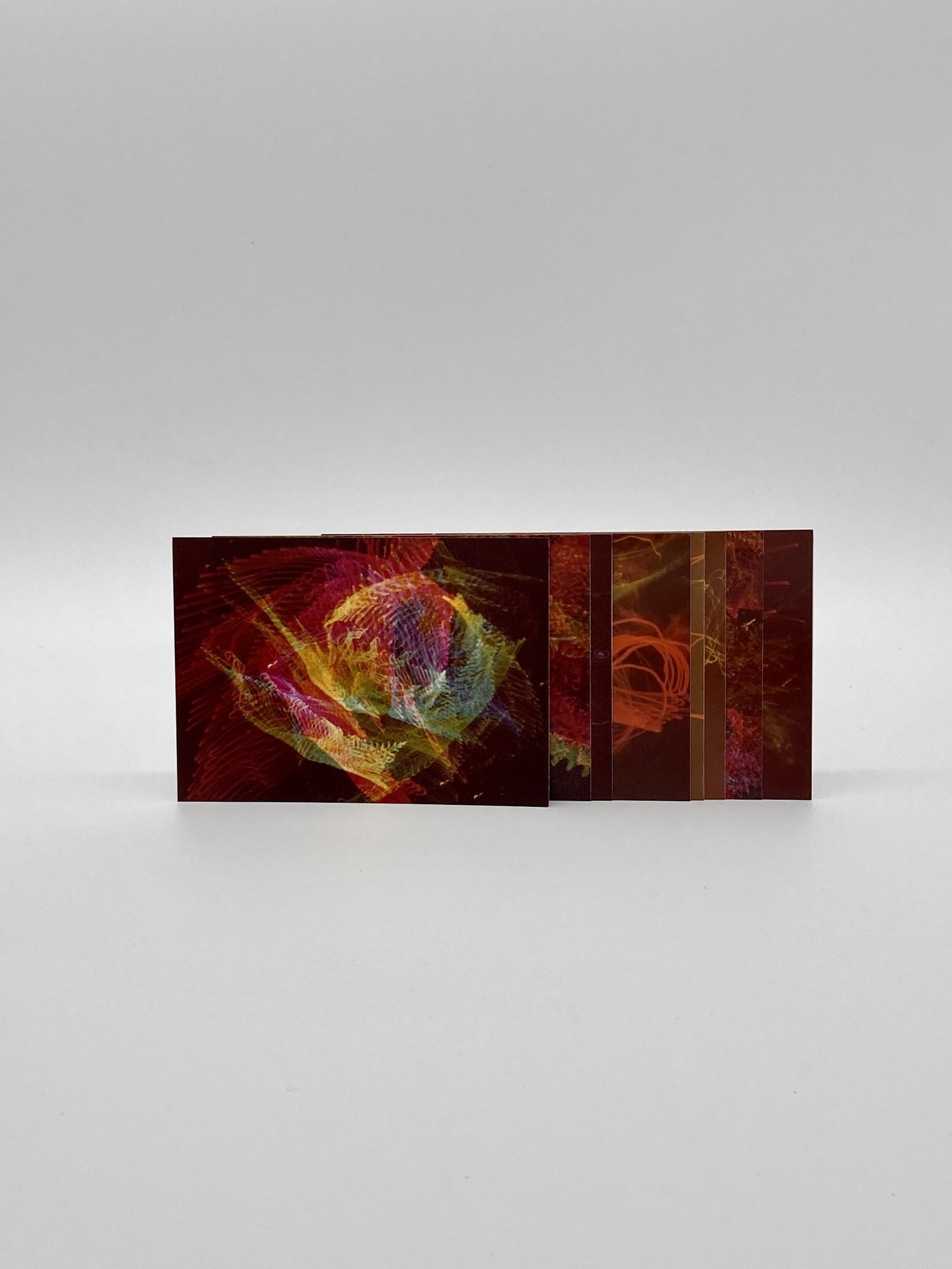 Image 1 of 12
Image 1 of 12

 Image 2 of 12
Image 2 of 12

 Image 3 of 12
Image 3 of 12

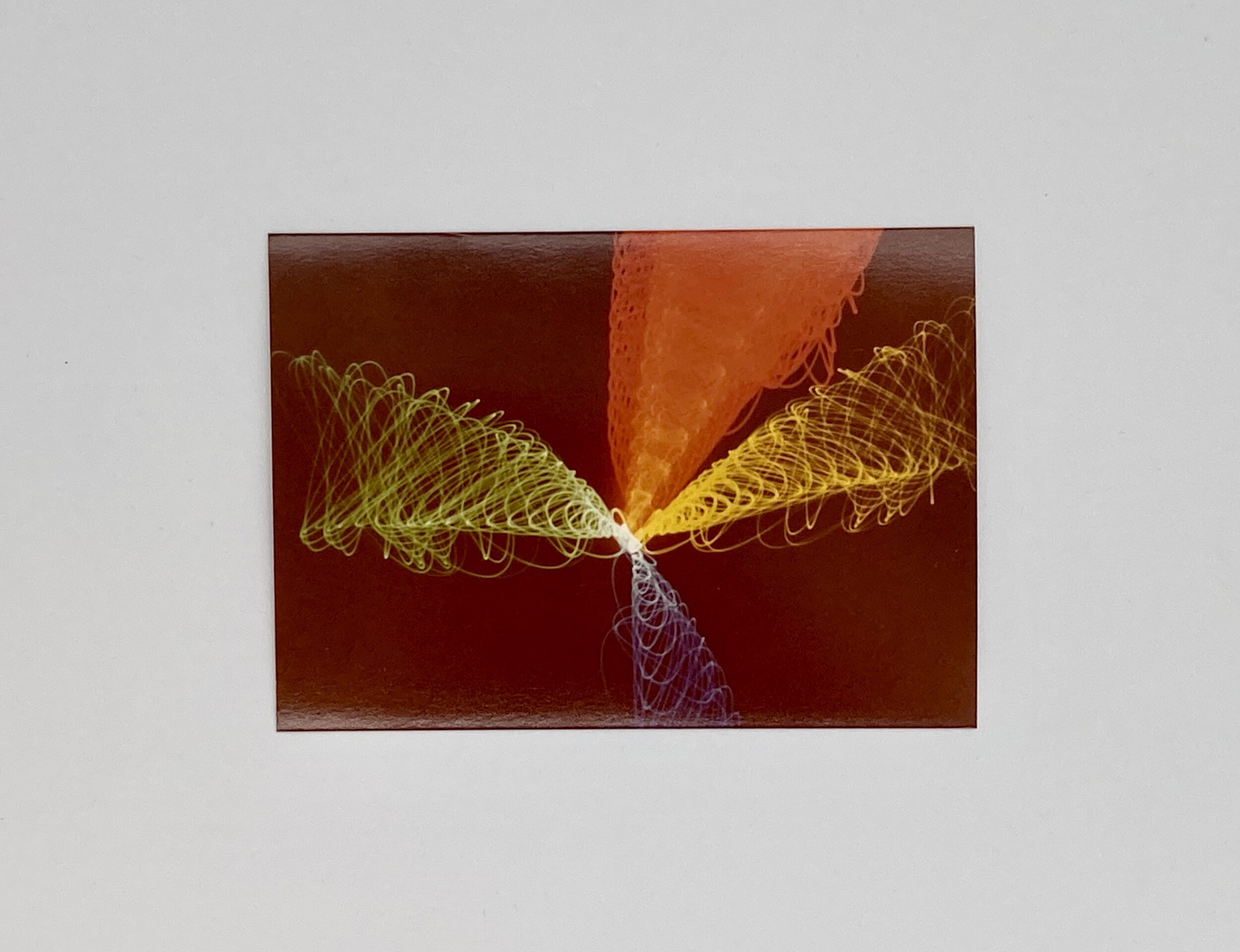 Image 4 of 12
Image 4 of 12

 Image 5 of 12
Image 5 of 12

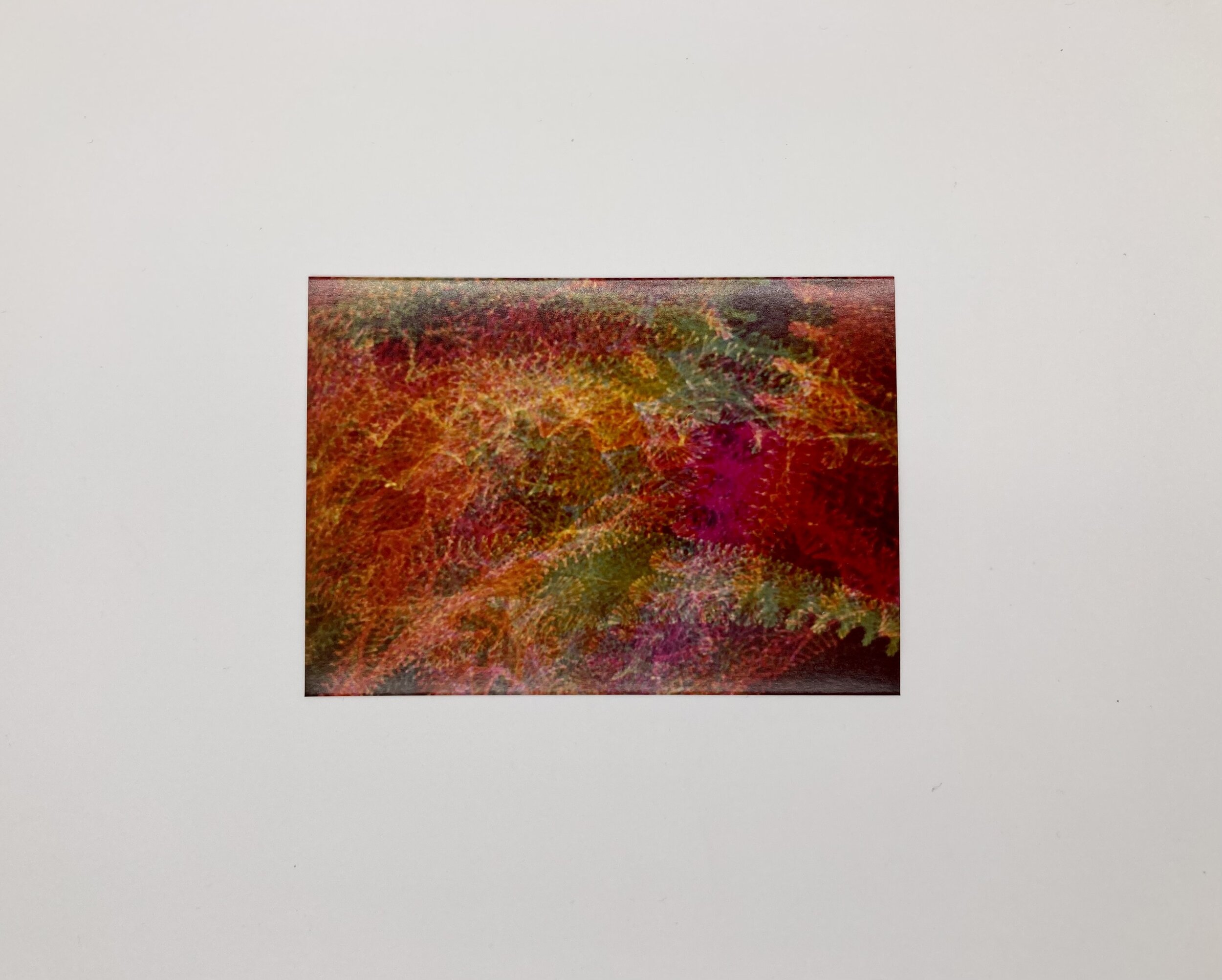 Image 6 of 12
Image 6 of 12

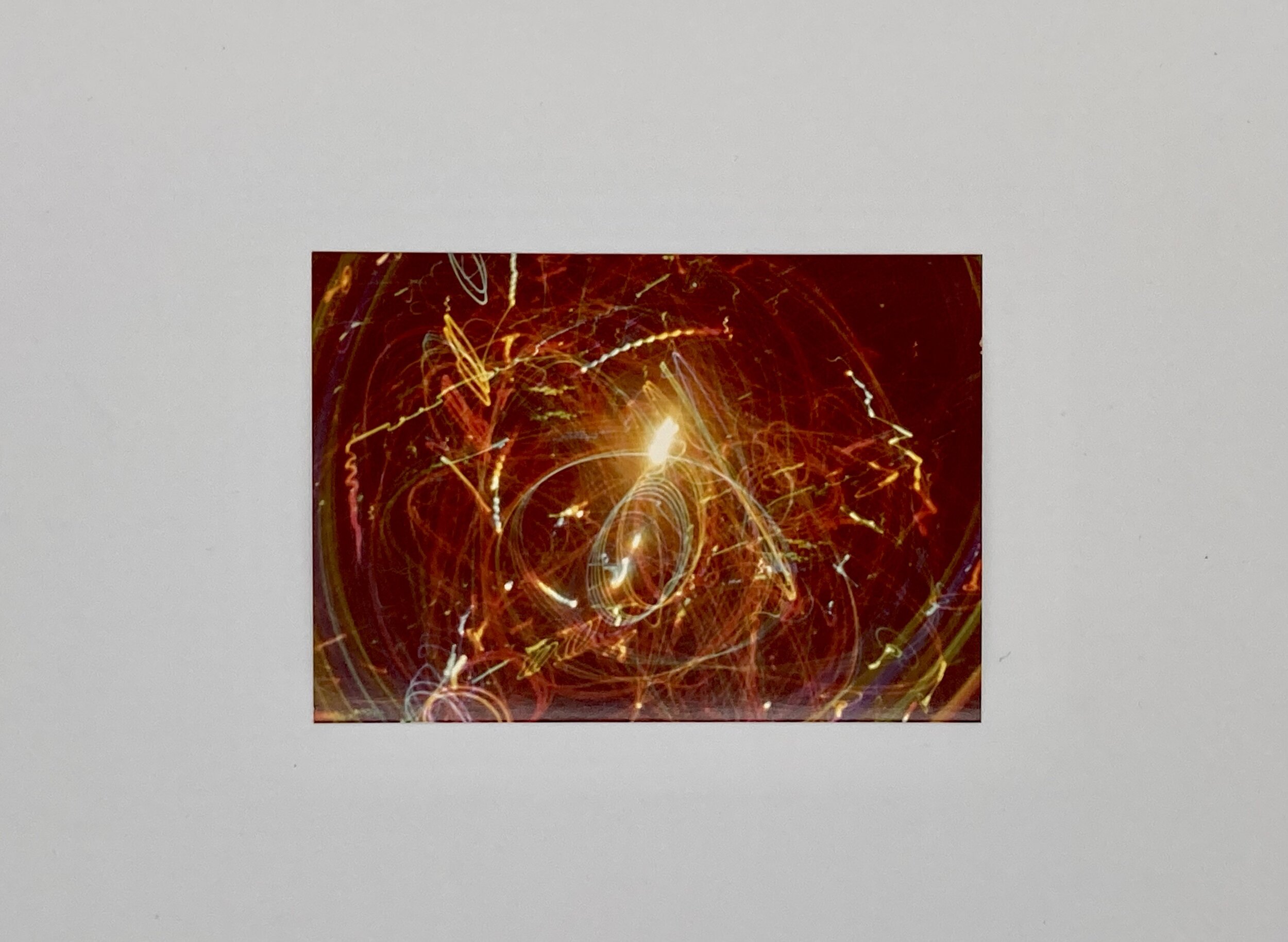 Image 7 of 12
Image 7 of 12

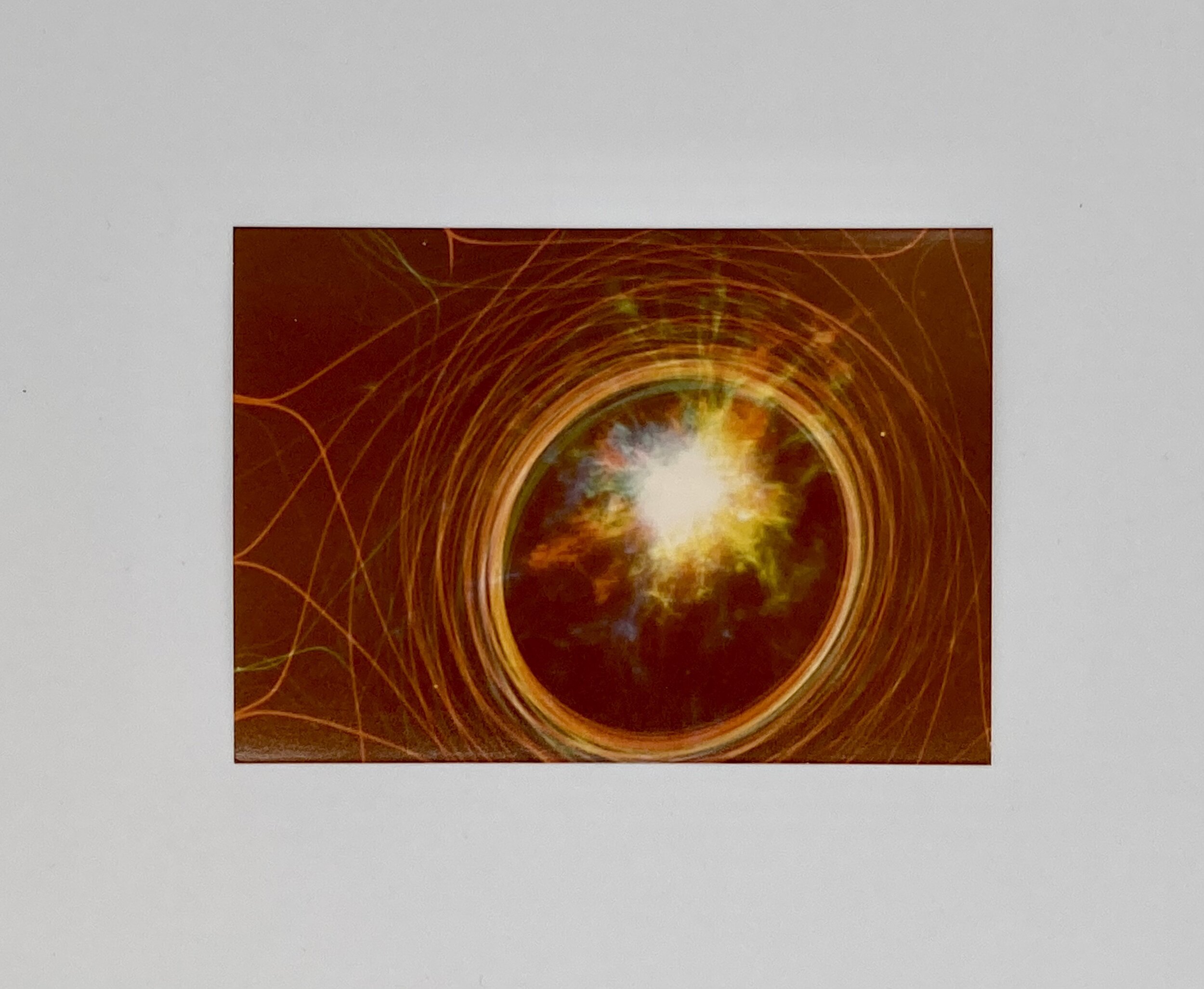 Image 8 of 12
Image 8 of 12

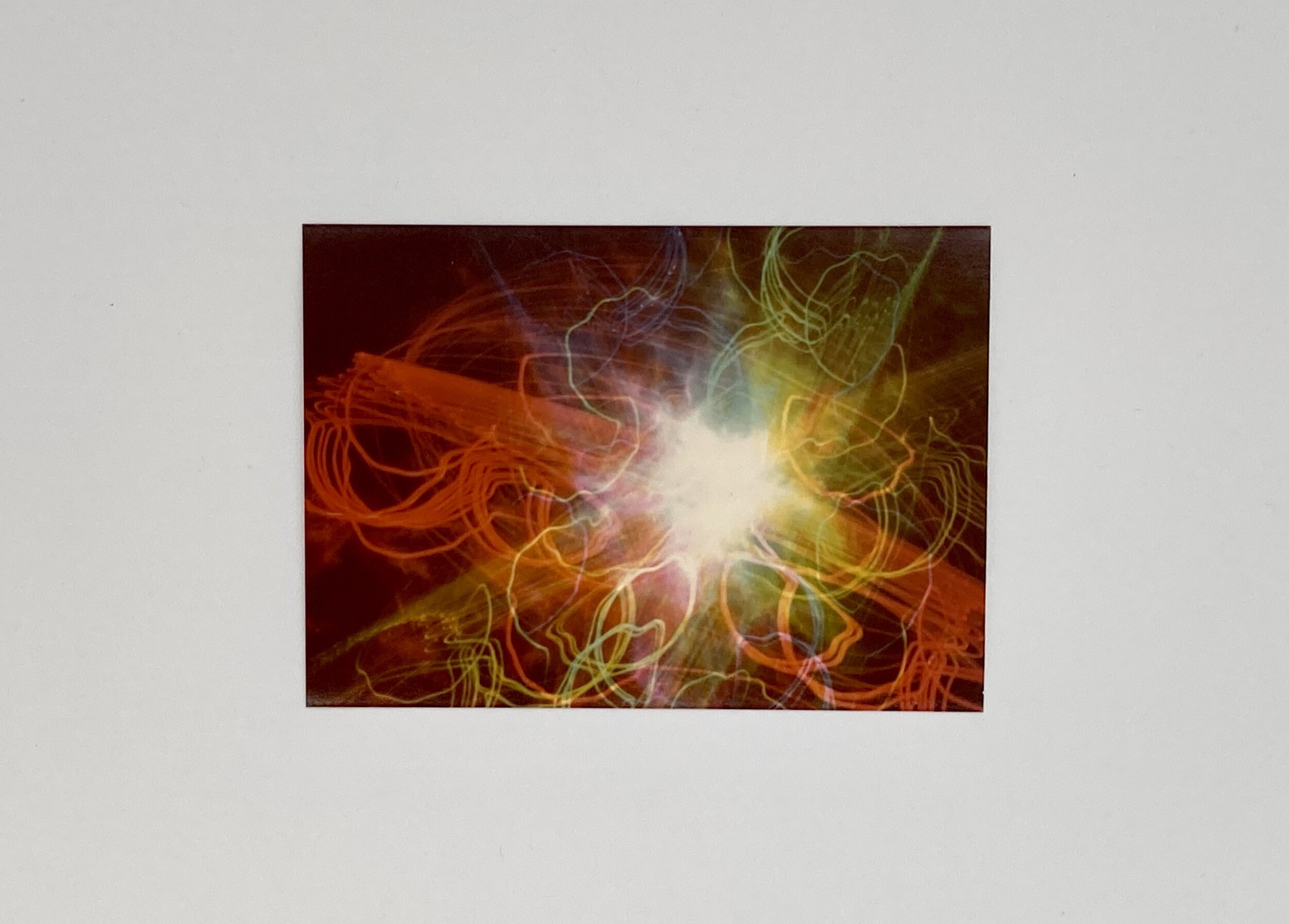 Image 9 of 12
Image 9 of 12

 Image 10 of 12
Image 10 of 12

 Image 11 of 12
Image 11 of 12

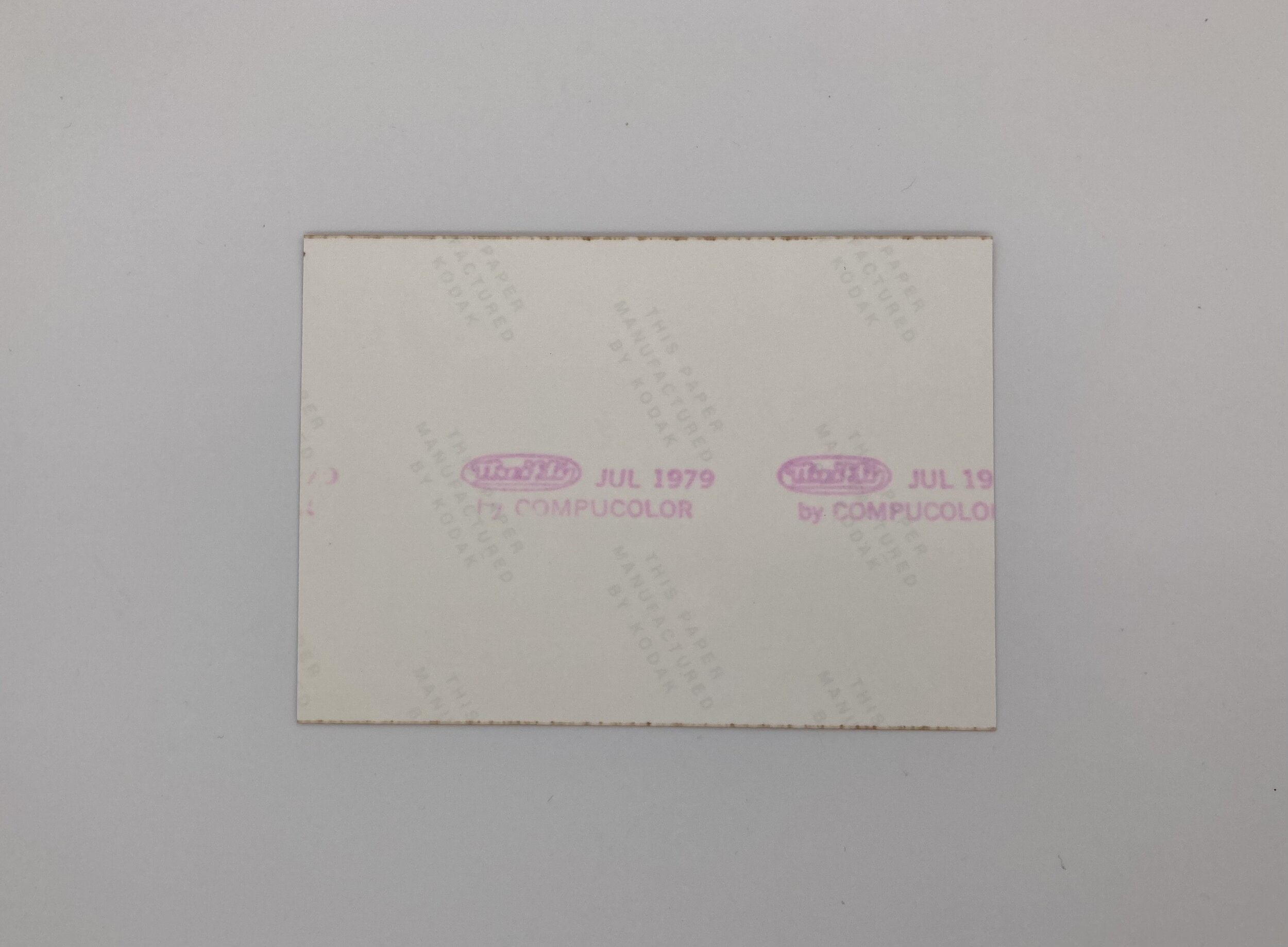 Image 12 of 12
Image 12 of 12













Oscilloscope Art (1979) | Unattributed
A set of nine 3.5 x 5” (9 x 13 cm) photographs. Each photo was developed on Kodak paper at a Thrifty chain location, using the Compucolor method of film processing. Dates on the backs of the photos variously give March, April, and July 1979 as development time frames. The photos are bright and crisp, though the back sides each show thin lines of foxing at the top and bottom edges. None of the photos are curved or bent.
Ben F. Laposky’s pioneering Oscillons of the early 1950s—credited as the first computer art—were created by photographing the electronic display of an oscilloscope. In subsequent decades, others undertook similar methods to produce their own oscilloscope art. For instance, the eighth issue of the artists’ magazine Spirale contains examples by multiple artists, with accompanying essays by Laposky and others. Due to the ephemeral nature of oscilloscope imagery, and the lack of printing accessories for such devices, the photograph has been the primary material format for oscilloscope art since Laposky.
For your consideration here is a set of nine photographs of oscilloscope art created by an unknown practitioner in the late 1970s. The photos were developed between March and July of 1979 at Thrifty, a photo-development chain that had locations throughout California at the time. While the photos may have been taken earlier and in a different location, it is reasonable to attribute their creation to a California tinkerer working in the late 1970s.
One of the most intriguing aspects of Laposky’s project is the notion, promulgated recently in the journal Chaos, that he may have been the first human being to observe controlled chaotic attractors—a decade before Lorenz, for whom the concept is named. As pure speculation and fancy, we note that the Santa Cruz Chaos Cabal, a group of tinkerers who helped establish the field of chaos theory, were operating at this time in proximity to several Thrifty photo-development locations.
A set of nine 3.5 x 5” (9 x 13 cm) photographs. Each photo was developed on Kodak paper at a Thrifty chain location, using the Compucolor method of film processing. Dates on the backs of the photos variously give March, April, and July 1979 as development time frames. The photos are bright and crisp, though the back sides each show thin lines of foxing at the top and bottom edges. None of the photos are curved or bent.
Ben F. Laposky’s pioneering Oscillons of the early 1950s—credited as the first computer art—were created by photographing the electronic display of an oscilloscope. In subsequent decades, others undertook similar methods to produce their own oscilloscope art. For instance, the eighth issue of the artists’ magazine Spirale contains examples by multiple artists, with accompanying essays by Laposky and others. Due to the ephemeral nature of oscilloscope imagery, and the lack of printing accessories for such devices, the photograph has been the primary material format for oscilloscope art since Laposky.
For your consideration here is a set of nine photographs of oscilloscope art created by an unknown practitioner in the late 1970s. The photos were developed between March and July of 1979 at Thrifty, a photo-development chain that had locations throughout California at the time. While the photos may have been taken earlier and in a different location, it is reasonable to attribute their creation to a California tinkerer working in the late 1970s.
One of the most intriguing aspects of Laposky’s project is the notion, promulgated recently in the journal Chaos, that he may have been the first human being to observe controlled chaotic attractors—a decade before Lorenz, for whom the concept is named. As pure speculation and fancy, we note that the Santa Cruz Chaos Cabal, a group of tinkerers who helped establish the field of chaos theory, were operating at this time in proximity to several Thrifty photo-development locations.
A set of nine 3.5 x 5” (9 x 13 cm) photographs. Each photo was developed on Kodak paper at a Thrifty chain location, using the Compucolor method of film processing. Dates on the backs of the photos variously give March, April, and July 1979 as development time frames. The photos are bright and crisp, though the back sides each show thin lines of foxing at the top and bottom edges. None of the photos are curved or bent.
Ben F. Laposky’s pioneering Oscillons of the early 1950s—credited as the first computer art—were created by photographing the electronic display of an oscilloscope. In subsequent decades, others undertook similar methods to produce their own oscilloscope art. For instance, the eighth issue of the artists’ magazine Spirale contains examples by multiple artists, with accompanying essays by Laposky and others. Due to the ephemeral nature of oscilloscope imagery, and the lack of printing accessories for such devices, the photograph has been the primary material format for oscilloscope art since Laposky.
For your consideration here is a set of nine photographs of oscilloscope art created by an unknown practitioner in the late 1970s. The photos were developed between March and July of 1979 at Thrifty, a photo-development chain that had locations throughout California at the time. While the photos may have been taken earlier and in a different location, it is reasonable to attribute their creation to a California tinkerer working in the late 1970s.
One of the most intriguing aspects of Laposky’s project is the notion, promulgated recently in the journal Chaos, that he may have been the first human being to observe controlled chaotic attractors—a decade before Lorenz, for whom the concept is named. As pure speculation and fancy, we note that the Santa Cruz Chaos Cabal, a group of tinkerers who helped establish the field of chaos theory, were operating at this time in proximity to several Thrifty photo-development locations.